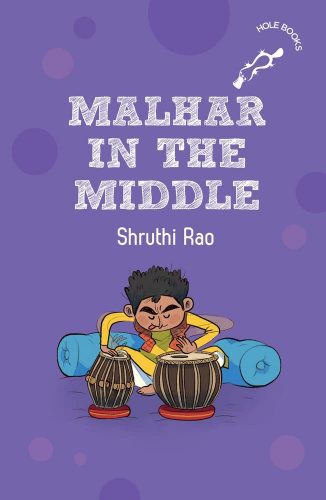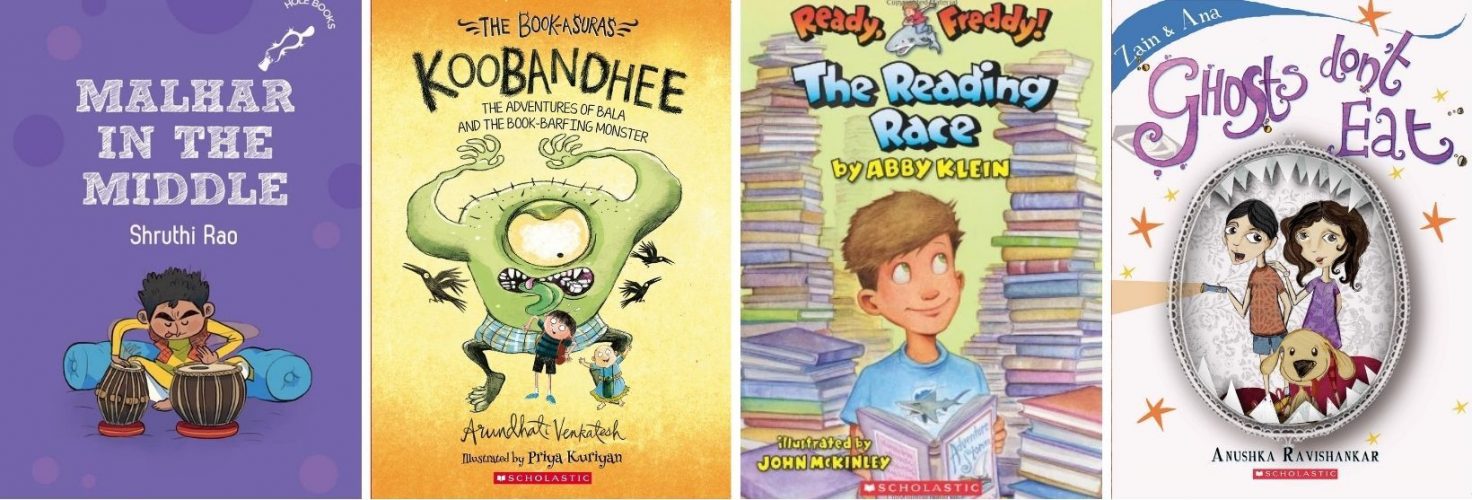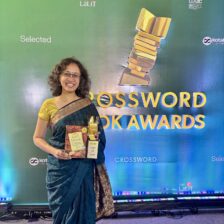I LOVE Shruthi Rao’s books. We read Manya Learns to Roar at my first reading programme, and even before that, I read and loved Susie Will Not Speak. If anything, I liked Malhar in the Middle even more.
Malhar loves playing the tabla. But why does tradition demand that he should sit on the side? Why is he is the ‘accompanying artiste’? Isn’t the tabla player equally important at a concert?
A big theme like tradition is handled with the lightest touch possible, and it’s beautifully done. I love that Malhar manages to solve his own problem without needless drama or emotional conflict. He knows what he wants, he knows what to do, and he goes about doing it in a way that is as satisfying as it is lovely.
Here’s what we’ll do with the book at my book club.

Book Discussion - Tradition
What traditions do you like? Are there any traditions that you would like to change? I love that one of the minor characters in the story is a girl who plays the tabla. Is this a step away from tradition in some way?
Tradition could be a difficult topic with seven and eight-year-olds, but I’m sure it will be enlightening for all of us!
Resistance
Sometimes, the smallest things can be acts of resistance. Based on Malhar’s story, I would love to introduce the children to other people who took a stand and made a difference in tiny little ways. If they have examples that they would like to share with me, all the better!
Musical instruments
I love linking reading with other activities, and music is always special. As we read Peanut vs the Piano, the children played instruments, recited poems–and even performed kalaripayattu!
This time, we’ll do something slightly different. Malhar wants to take centre-stage, but we’ll all take centre-stage as we create musical instruments of our own in class, and use them to accompany a song!
Join a programme


Leave a Reply